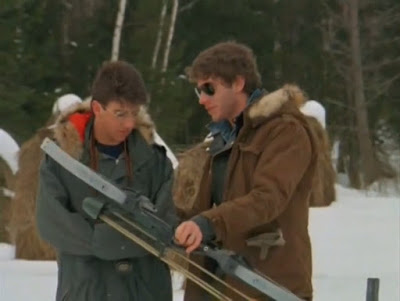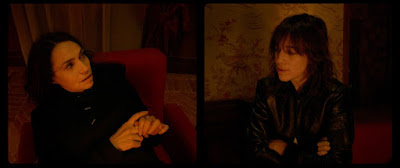The Ballad of Tam-Lin [Roddy McDowall, 1970]:
I have a real fondness for strange, unclassifiable films, and they don't come much stranger and more unclassifiable than this. The only feature-film directed by actor and photographer Roddy McDowall, The Ballad of Tam-Lin (released in some territories as The Devil's Widow, The Devil's Woman, or simply Tam-Lin) adapts the traditional Scottish ballad by the poet Robert Burns and transposes it onto the then-contemporary world of swinging London.
Mod stylizations define the film's aesthetic, as Stephanie Beacham's sheltered vicar's daughter, Janet Ainsley, falls under the spell of Ian McShane's sexually charged photographer, Tom Lynn. Tom is part of a travelling coven of bored and beautiful scenesters who congregate around the wealthy, middle-aged American heiress, Michaela Cazaret. Cazaret in turn has bewitched the young Tom, resulting in a sparring love triangle that increasingly moves into the realm of the supernatural, as pastoral romance and folk horror influences combine with the excesses of drugged-out psychedelia.
Cazaret is played with great command and sensitivity by the fading superstar Ava Gardner, and it was in part McDowall's awe for Gardner, and his desire to provide the actor with a comeback role more befitting her talents and ageing beauty, that led him to direct the film.
The Ballad of Tam-Lin [Roddy McDowall, 1970]:
In terms of style and aesthetics, the film is a real time capsule, building on the influences of European art-cinema, with its careful, widescreen compositions, bold primary colors, and extraordinary use of the natural landscape. Here, a scene of seduction plays out across a series of stop-frame images, while frequent dissolves between characters, scenes and locations work to accentuate the dreamy, barely lucid tone that defines the film throughout. Many viewers will no doubt see such adornments as entirely dated, and that's fair enough, but as someone who really values fearless originality in picture-making, the excesses and indulgences of McDowall's film feel purely cinematic, and make sense within its strange witch's brew of bucolic fantasia, 60s art-house decadence and genuine horror.
The third act shift into psychotropic terror is a trip in every sense of the word, and sees the text of the original poem manifest in both literal and figurative visions of escape, transfiguration, and salvation from supernatural retribution.
The acclaimed folk-rock group Pentangle supply the soundtrack (along with instrumental music by Stanley Myers), which makes full use of the poet's verse and often underlines literal translations from text to screen. In any context, this is a film that remains obscure and fascinating in the best possible way, and is one that seems (intentionally or otherwise) to tap into the confluence between hippie era utopia and the darker, black magic influences threatening the dream of this generation of young lovers, which seemed to be permeating the culture following the Manson Family massacres.















































.jpg)
.jpg)
.jpg)



